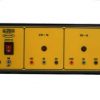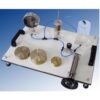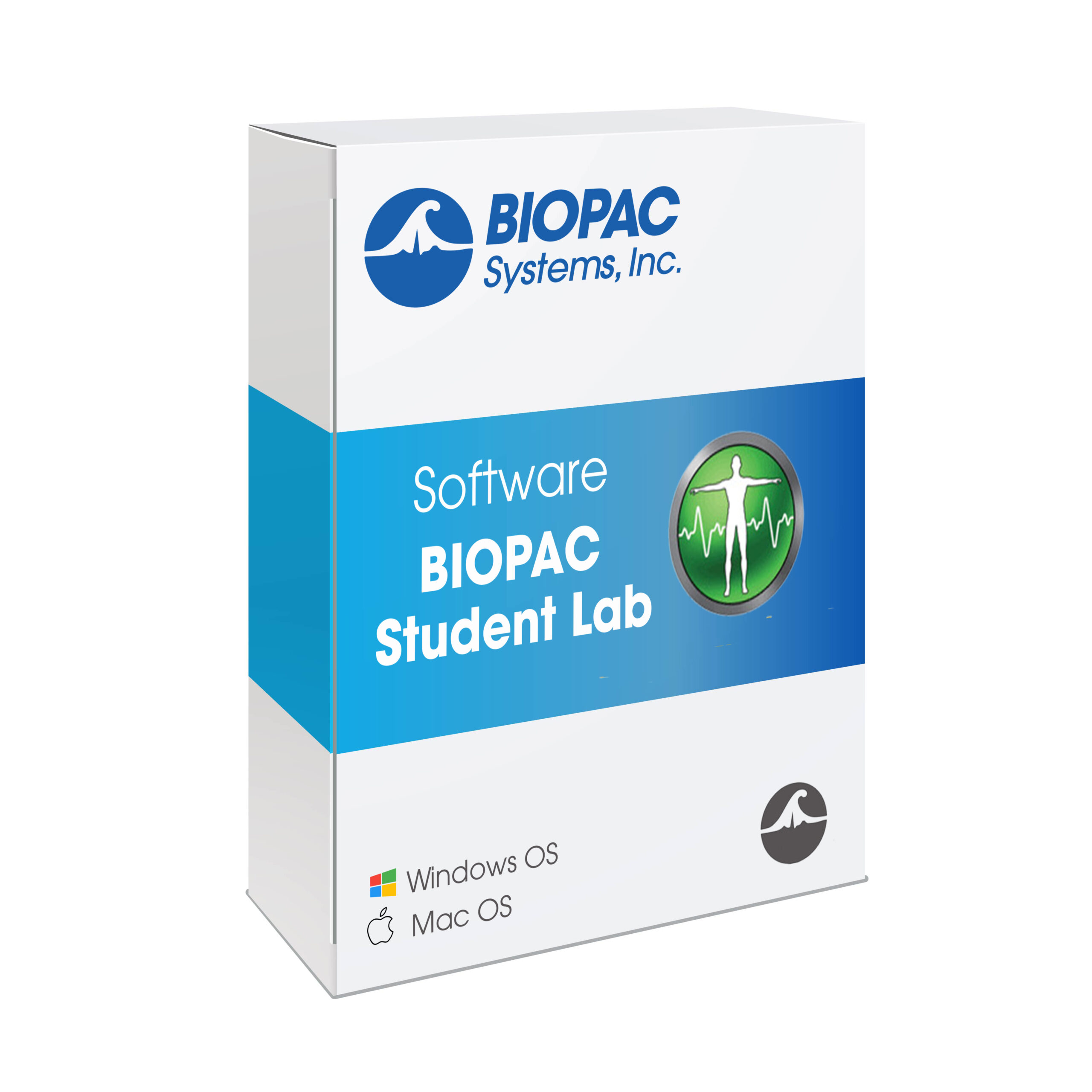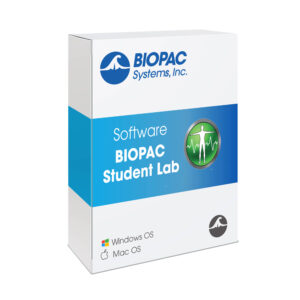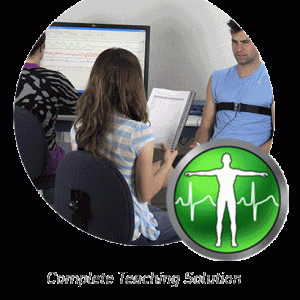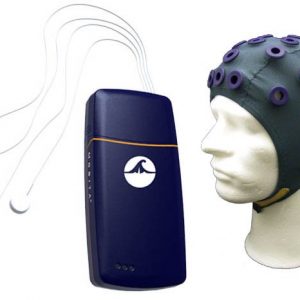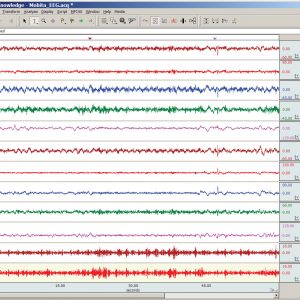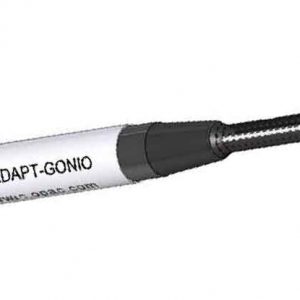Supported Laboratory Disciplines
- Physiology (animal and human)
- Exercise Physiology and Biomechanics
- Psychophysiology and Neurophysiology
- Pharmacology and Toxicology
- Human Anatomy
- Biology
- Bioengineering (BME)
- And more!
Key Features
- Over 65 lesson experiments
- Video demonstration clips
- Online lessons
- Distance learning
- Suitable for 2- & 4-year programs, medical schools and nursing programs
- Curriculum Library & Extensive support materials
- Lesson development support from BIOPAC
Preferred by Publishers
BSL lesson experiments are included in a number of the leading published Lab Manuals and have been successfully used to study:
| · ECG
· EDA (GSR) · EEG · EMG · EOG |
· Blood Pressure
· Heart Sounds · Pulmonary Function · Respiration · Temperature |
· Gas Analysis
· Metabolic Rate · Bioimpedance/Cardiac Output |
· Reaction Time
· Force · Biofeedback · Nerve Conduction |
Comprehensive support from published Lab Manuals includes—
Marieb: PEARSON Benjamin Cummings
Fox: WCB/McGraw-Hill
Wood: PEARSON Benjamin Cummings
Pflanzer: Kendall/Hunt
Lesson development made simple—for you and your students
Create your own lesson in just a few simple steps…
- Pick from more than 100 signal and calculation channel Presets
- Establish the recording parameters (sample rate, duration of experiment/lesson)
- Add instructions to the journal—students will follow your lesson plan
- Save the file as a template—students open the file with your settings in place
You can even use BSL for graduate programs and advanced research. If you are interested in developing your own lessons, or using the Biopac Student Lab system for research, click the BSL PRO Software option.
Extensive customization is easy
The new Curriculum Management System licensed feature allows educators to easily customize and control all aspects of the lesson content including the on-screen instructions, introductions, recording and analysis procedures, lesson preferences and data reports. Educators can create their own lessons with BSL PRO, and those lessons can be selectively distributed from the Master computer to all networked lab computers.
Learn more today! Request a demonstration to see how the Biopac Student Lab can help you engage students and deliver inspired teaching.
Top of Form
Bottom of Form
| Curriculum Title | Summary |
| A01 Frog Prep | Explanation of how to prepare the frog for the following frog experiments: A02, A03, and A04. |
| A02 Frog Gastrocnemius | Stimulate the frog gastrocnemius muscle and record threshold voltage and contractile responses. Option: Stimulate the muscle via the sciatic nerve. |
| A03 Frog Sciatic Nerve | Record Compound Action Potentials (CAP) from a dissected frog sciatic nerve. |
| A04 Frog Heart – Cardiac Rate & Contractility | Record cardiac rate and contractile responses of the surgically exposed frog heart.
Option: Study the effects of chronotropic/inotropic agents on autonomic control of heart rate. |
| A05 Visceral Smooth Muscle | Study the effects of media ionic composition, temperature, and various pharmacological agents on the contraction of the visceral smooth muscle of the rabbit ileum. |
| A06 Cockroach Ventral Nerve AP | Record action potentials through a cockroach ventral nerve cord. |
| A07 Fish Respiration & Q10 | Measure the metabolic rate of goldfish at two different temperatures (acclimation temp and acute exposure temp) to demonstrate the Q10 principle. |
| A08 Earthworm Action Potential | Use extracellular recording techniques to stimulate and record action potentials. Measure conduction velocity and plot Strength vs. Duration. |
| A11 Resting Potential – Crayfish Muscle | Follows “Lab 4: Crayfish Resting Potential” from the Crawdad Lab Manual. |
| A14 CPG Hornworm | Perform extracellular recording on tobacco hornworm pupae to study central pattern generators (CPGs) and neural mechanisms. Video clip included. |
| A15 Earthworm Smooth Muscle | Use a force transducer and tissue bath with isolated earthworm gut to measure contractions and the effect of drugs. Video clip included. |
| A17 Frog Heart Intracellular Action Potentials | Examine electrical properties of myocardial cells in the vertebrate heart and study the effects of pharmacological probes on the cardiac action potential. |
| H01 12-Lead ECG | Record a 12-lead ECG. |
| H02 Compartmental Modeling | Explore Westheimer’s saccadic eye movement model with actual and model data. |
| H03 Nerve Conduction – MP30 | Use the MP30 for Nerve Conduction Velocity along the ulnar nerve of a human subject. Video clip included. |
| H03 Nerve Conduction – MP36/35 | Use the MP36 or MP35 for Nerve Conduction Velocity along the ulnar nerve of a human subject. Video clip included. |
| H04 Blood Pressure | Record (noninvasive) blood pressure response to isometric or straining exercise. |
| H05 WAnT Wingate Test | Record the Wingate Anaerobic Test and complete Wingate Test calculations. In this lesson, the WAnT is performed on a modified, plate loaded, Monark 818E work ergometer. |
| H06 Finger Twitch (SS12LA) | Use a Force transducer to record the finger twitch from a human subject. Video clips included. |
| H06 Finger Twitch (SS61L) | Use the Finger Twitch transducer to record the finger twitch from a human subject. |
| H07 EMG | Active Learning Experiment for human EMG |
| H08 Dive Reflex | Active Learning ECG Dive Reflex Experiment |
| H09 Auditory Evoked Potential | Auditory Evoked Potential recordings from human subjects |
| H10 Hemispheric EEG | Electroencephalography (EEG) and Hemispheric Asymmetry |
| H11 Mirror Test EDA | Sensory-Motor Learning and Electrodermal Activity (EDA) |
| H12 Saccades EOG | EOG: Angular Displacement – Saccade Study |
| H13 Tracking EOG | EOG: Tracking study – Effect of visual stimulation vs. imagination |
| H14 Fixation I EOG | EOG: Ocular Fixations while reading (Part one: 3-lead) |
| H15 Fixation II EOG | EOG: Ocular Fixations while viewing an image (Part two: 6-lead) |
| H16 Reflexes & Reaction Time | Active Learning: Reflexes & Reaction Time |
| H17 Biomechanics | Biomechanics (Goniometry & EMG) |
| H18 Automatic Noninvasive BP | Exercise Physiology: Automatic Noninvasive Blood Pressure |
| H19 VO2 & RER | Record and measure oxygen consumption and respiratory exchange ratio |
| H20 Filtering | Design and develop software-based digital filters and cascade 2nd-order biquads. |
| H21 Impedance Cardiography | Record and measure relative differences in Cardiac Output and Stroke Volume using a noninvasive bioimpedance technique. |
| H22 Visual Evoked Response | Visual Evoked Potential recordings from human subjects (P100 test) |
| H23 Signal Averaging ECG | Record ECG data under different experimental conditions and perform a Signal Averaged ECG recording for each segment of data. |
| H24 Habituation | Record EDR and Heart Rate response to repeated stimulus to demonstrate habituation and its probabilistic trend toward decreased response. |
| H25 BME Breadboard I | Schematics and design notes to build Active Filters, Sine Wave Generator, Logarithmic Amplifier, and Absolute Value Converter with SS39L and MP36, MP35, or MP30. |
| H26 BME Breadboard II | Block diagram to build ECG R-wave detector with SS39L and MP36, MP35, or MP30. |
| H27 Facial EMG | Record EMG response on the corrugator supercilii & zygomaticus major muscles. |
| H28 Reflex Response | Record knee and ankle reflex response with the SS36L Reflex Hammer transducer. Optional: Use SS20L Goniometer to measure angular movement in response to varying strike force. |
| H29 Basal Metabolic Rate | This BSL PRO lesson describes the hardware and software setup of the BSL System in order to measure Oxygen Consumption (V̇O2) using an open circuit indirect calorimetry technique. Metabolic Rate can then be calculated using the V̇O2 measurement. |
| H30 Stroop Effect | Record strength of interference between associative tasks: naming & reading. |
| H31 Prepulse Inhibition | Record the startle response with and without a prepulse inhibition stimulus. |
| H32 Heart Rate Variability | Explore statistical measures, geometric measures, and spectral analysis in heart rate variability studies. |
| H33 FFT Fast Fourier | Build up a square wave composite waveform form sine components to examine the FFT. |
| H34 Electrogastrogram | Record an electrogastrogram (EGG) from a human subject. |
| H35 ROM/Sit & Reach | Perform Range of Motion (ROM) and Sit and Reach tests with a goniometer and compare to normative values. |
| H36 Muscular Biofeedback | Measure changes in EMG with maximal contraction, as compared to baseline, incorporating different combinations of visual and auditory feedback. |
| L01 Electromyography I | Standard & Integrated EMG |
| L02 Electromyography II | Mechanical Tasks |
| L03 Electroencephalography I | Relaxation & Brain Rhythms |
| L04 Electroencephalography II | Alpha Rhythms in the Occipital Lobe |
| L05 Electrocardiography I | Components of the ECG |
| L06 Electrocardiography II | Bipolar Leads (Leads I, II, III), Einthoven’s Law, Mean Electrical Axis on the Frontal Plane |
| L07 ECG & Pulse | Mechanical Action of the Heart, Peripheral Pressure Pulse, Plethysmography |
| L08 Respiratory Cycle I | Respiratory Rates, Relative Depths of Breathing, Regulation of Ventilation |
| L09 EDA & Polygraph | Electrodermal Activity & the Polygraph |
| L10 Electrooculogram I | Eye Movement; Saccades & Fixation During Reading |
| L11 Reaction Time I – Auditory Stimulus | Reaction Time & Learning with fixed-interval and random presentation tTrials of auditory (click) stimulation. |
| L11A Reaction Time II – Visual Stimulus | Reaction Time & Learning With Fixed-interval and Pseudo-random Presentation Trials of visual LED stimulation |
| L12 Pulmonary Function I | Volumes & Capacities
|
| L13 Pulmonary Function II | Pulmonary Flow Rates (FEV1,2,3 and MVV) |
| L14 Biofeedback | Relaxation & Arousal |
| L15 Aerobic Exercise Physiology | Cardiovascular & Respiratory Adjustments During and After Exercise |
| L16 Blood Pressure | Indirect BP Measurement, Ventricular Systole and Diastole, Korotkoff Sounds, Mean Arterial Pressure |
| L17 Heart Sounds | Cardiac Valve Functions, Electrical & Mechanical Events |
| L20 Spinal Cord Reflexes | Anatomical and Physiological Elements of Simple Spinal Reflexes |
| S01 EMG 1 Motor Unit Recruitment | Motor Unit Recruitment |
| S02 EMG 2 Mechanical Work | Mechanical Work |
| S03 ECG1 Components of the ECG | Components of the ECG |
| S04 ECG 2 | Electrocardiography |
| S05 EEG 1 Brain Rhythms | Brain Rhythms |
| S06 EEG 2 Alpha Rhythms in the Occipital Lobe | Alpha Rhythms in the Occipital Lobe |
| S08 EOG 1 | Electrooculogram |
| S09 Biofeedback | Autonomic Nervous System |
| S10 Aerobic Exercise Physiology | Heart & Metabolic Demands |
| S11 Reaction Time | Brain Fixed & Pseudo-random Intervals |
| S12 Respiration – Apnea | The Respiratory System |





